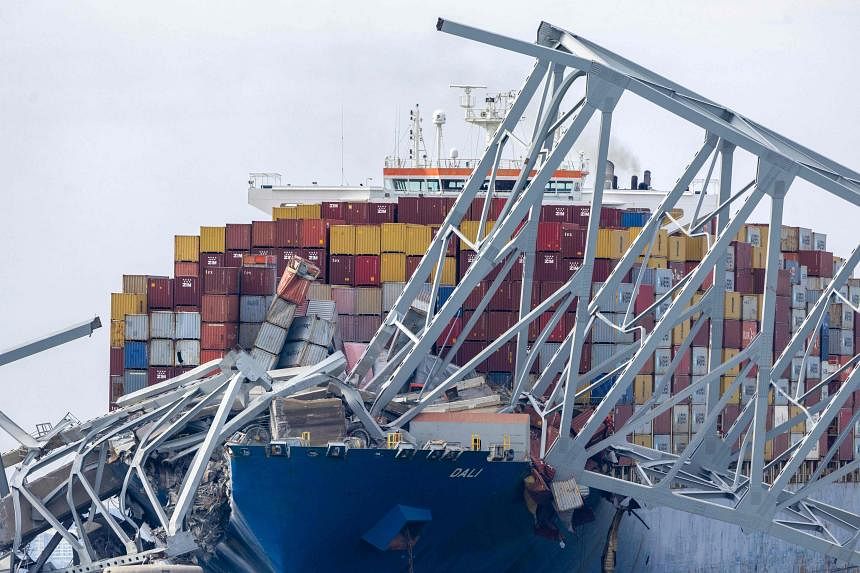Titanic law helps ship owner limit liability in Baltimore bridge collapse

NEW YORK – The owner of the Singapore-flagged ship that rammed into a Baltimore bridge could face hundreds of millions of dollars in damage claims after the accident sent vehicles plunging into the water and threw the eastern US transportation network into chaos.
But legal experts said there is a path for reducing liability under an obscure 19th-century law once invoked by the owner of the Titanic to limit its payout for the 1912 sinking.
At the centre of the legal fallout will be Singapore-based Grace Ocean, owner of the container ship Dali that crashed into the Francis Scott Key Bridge on March 26 at the start of a voyage chartered by the shipping giant Maersk.
The company could face a bevy of lawsuits from multiple directions, including from the bridge’s owner and anyone who sues for personal injury or emotional distress. Damages claims are likely to fall on the ship owner and not the agency that operates the bridge, since stationary objects are not typically at fault if a moving vessel hits them, said Michael Sturley, a maritime law expert at the University of Texas at Austin’s School of Law.
But an 1851 law could lower the exposure to tens of millions of dollars by capping the ship owner’s liability at how much the vessel is worth after the crash, plus any earnings it collected from carrying the freight on board, said Martin Davies, the director of Tulane University’s Maritime Law Centre.
The law was passed initially to prevent shipping giants from suffering steep and insurmountable losses from disasters at sea. An eight-figure sum, while still hefty, would amount to “considerably less” than the full claims total, Davies said.
“It’s a very unusual casualty in one respect, particularly because of this footage of the whole bridge falling down,” Davies said. “But in many ways, it’s not unusual, because ships collide and there’s damage and there’s injury all the time.”
Lawrence B. Brennan, an adjunct professor of law at Fordham University School of Law in New York and an expert on admiralty and maritime law, said he assumes the Dali’s operator will shortly begin a proceeding in the US under the 1851 law, which was cited by the Titanic’s owner in a Supreme Court case more than a century ago.
The ship owner’s insurance would help the company through the legal risks. About 90 per cent of the world’s ocean-bound cargo is insured by an arm of the International Group of Protection and Indemnity Clubs, which oversees the 12 major mutual insurance associations for ship owners.
A key to determining any insurance claims will be proving whether the accident was caused by negligence, and if so by whom, or mechanical failure, according to Bloomberg Intelligence.
The ship is insured by the Britannia Protection and Indemnity Club, which is a mutual insurance association that is owned by shipping companies. It is one of the dozen clubs that make up the International Group of P&I Clubs.
Bloomberg Intelligence also said Maersk may not be liable as the Danish company had no crew on board and the ship was operated by a charter company.
“Maritime insurance will likely cover some of the costs, yet uncertainty around the total liabilities and who will pay for them will likely weigh on Maersk’s spreads in the near term,” said Stephane Kovatchev, a credit analyst with Bloomberg Intelligence.
